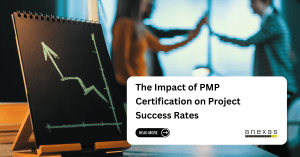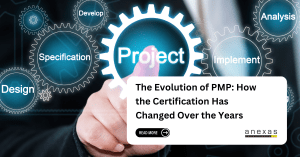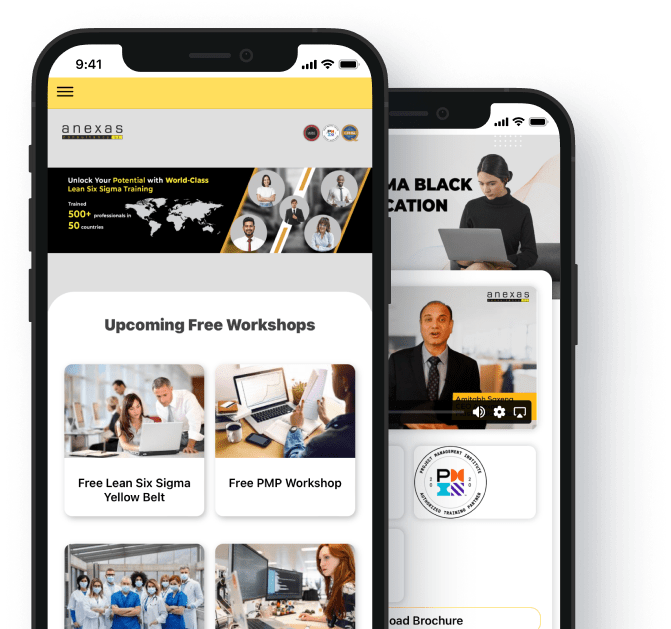Introduction
Project Scope Management is a critical aspect of project success, ensuring that all work required—and only the work required—is included in the project. Without a well-defined scope, projects are prone to scope creep, missed deadlines, and budget overruns. For PMP® professionals, mastering scope management is essential to keeping projects aligned with business objectives while effectively managing stakeholder expectations. This process involves defining, documenting, and controlling the project scope to prevent unnecessary changes that could disrupt project timelines and resources. In this guide, we will explore key techniques, best practices, and strategies to help PMP® professionals efficiently manage project scope, minimize risks, and drive project success.

What is Project Scope Management?
Effective project scope management is a fundamental aspect of successful project execution, ensuring that all necessary work is included while preventing unnecessary tasks from derailing progress. Project Scope refers to the detailed outline of all work required to complete a project, including objectives, deliverables, constraints, and assumptions. For PMP® professionals, mastering scope management is crucial for delivering projects on time and within budget while aligning with stakeholder expectations. The PMP® scope management knowledge area in the PMBOK Guide outlines structured processes to define, control, and validate project scope, preventing common issues like scope creep and misaligned deliverables.
Project Scope vs. Product Scope
A common misconception in project management is the confusion between project scope and product scope. While both are interrelated, they focus on different aspects of project execution. Product scope defines the features and functions of the final deliverable, answering the question: What does the product or service need to do? On the other hand, project scope focuses on the work required to deliver that product, answering: What needs to be done to achieve the final output? A clear understanding of this distinction helps PMP® professionals in defining project scope effectively, ensuring that both the product’s objectives and the project’s execution align seamlessly.
For example, in a software development project, the product scope may define that the software should include user authentication, reporting tools, and cloud storage integration. The project scope, however, will detail the tasks required to develop these features, including coding, testing, and deployment. Using scope management strategies for project success, project managers can ensure that all stakeholders have a clear understanding of both dimensions, avoiding unnecessary work and setting realistic expectations.
Overview of the PMP® Scope Management Knowledge Area
The PMP® scope management knowledge area consists of six essential processes designed to help project managers maintain control over the project’s scope. These processes include:
- Plan Scope Management – Developing a framework to define, manage, and control project scope.
- Collect Requirements – Engaging stakeholders through interviews, surveys, and focus groups to gather project needs.
- Define Scope – Creating a detailed project scope statement to serve as a reference throughout the project.
- Create Work Breakdown Structure (WBS) – Using a work breakdown structure for project scope to divide work into manageable components.
- Validate Scope – Implementing a scope validation process in project management, where deliverables are reviewed and approved by stakeholders.
- Control Scope – Employing project scope control techniques and tools to manage changes effectively and prevent uncontrolled scope expansion.
Each of these processes plays a critical role in scope creep prevention techniques in PMP®, ensuring that projects remain aligned with initial objectives while maintaining flexibility to accommodate necessary changes through a structured change control process in project scope management. For PMP® exam preparation, understanding these processes is essential, as PMP® exam scope management questions often test a candidate’s ability to handle scope-related challenges.
Importance of Scope Management in Project Success
The importance of scope management in project success cannot be overstated. A poorly defined project scope often leads to missed deadlines, budget overruns, and dissatisfied stakeholders. By following best practices in project scope management, such as engaging stakeholders early, using a structured work breakdown structure for project scope, and implementing a rigorous scope validation process in project management, PMP® professionals can significantly improve project outcomes. Stakeholder engagement in scope management is particularly vital, as it ensures that all project expectations are aligned, reducing the likelihood of costly revisions later. Additionally, adhering to project scope statement best practices ensures clarity in scope definition, preventing ambiguity and misinterpretation.
By mastering how to manage project scope effectively, PMP®-certified professionals can enhance project efficiency, minimize risks, and improve overall project success rates. Understanding these principles is not only crucial for real-world application but also a key component of PMP certification, making it an essential area of focus for aspiring and practicing project managers alike.
Key Processes of Project Scope Management (Aligned with PMBOK Guide)
Effective project scope management techniques for PMP® professionals revolve around six key processes, as outlined in the PMBOK Guide. These processes help define, monitor, and control project scope, ensuring that projects remain on track without unnecessary deviations. Best practices in project scope management emphasize proactive planning, continuous stakeholder engagement, and stringent scope control methods. Below is an in-depth exploration of each process, along with strategies to optimize project outcomes.
Plan Scope Management
The Scope Management Plan serves as a foundational document that outlines how scope will be defined, managed, and controlled throughout the project. Its key components include scope definition, stakeholder roles and responsibilities, and the tools and techniques required to ensure smooth execution. Defining project scope for PMP® professionals starts with clear documentation, ensuring that all project deliverables and exclusions are well-defined. Scope management strategies for project success recommend using a structured approach to prevent ambiguities that could lead to scope creep prevention techniques in PMP®. The Scope Management Plan also provides guidelines for handling scope changes, ensuring that project teams have a framework for managing scope-related risks efficiently.
Collect Requirements
Gathering accurate and complete requirements is essential to how to manage project scope effectively. Various techniques are used to collect project requirements, including interviews, surveys, focus groups, and stakeholder workshops. Advanced techniques like prototyping and benchmarking further refine project requirements by providing stakeholders with a tangible representation of deliverables. A critical tool in this process is the Requirements Traceability Matrix (RTM), which helps track requirements from initiation to project completion. By ensuring alignment between project objectives and stakeholder expectations, the RTM plays a crucial role in stakeholder engagement in scope management. Failure to collect and document requirements correctly can lead to misaligned expectations, costly rework, and project failure.
Define Scope
The Project Scope Statement is the cornerstone of project scope definition. It details the project’s deliverables, assumptions, constraints, and overall objectives. Project scope statement best practices emphasize the use of SMART criteria (Specific, Measurable, Achievable, Relevant, Time-bound) to ensure clarity and feasibility. Defining project scope for PMP professionals involves establishing clear boundaries for the project, specifying what is included and, equally importantly, what is not. This step helps mitigate the risks of uncontrolled changes and misaligned expectations, enabling scope creep prevention techniques in PMP®.
Create Work Breakdown Structure (WBS)
A well-structured work breakdown structure for project scope is essential for breaking down deliverables into manageable work packages. The WBS visually represents project tasks, making it easier to assign responsibilities and track progress. The WBS Dictionary further enhances project clarity by providing detailed descriptions of each component. PMP® scope management knowledge area recommends using the WBS as a critical tool for project scope control techniques and tools, ensuring that all work is accounted for and organized systematically. By breaking work into smaller units, teams can better manage timelines, allocate resources efficiently, and reduce the risk of overlooked tasks.
Validate Scope
The scope validation process in project management ensures that deliverables meet stakeholder expectations and project requirements. This process involves stakeholder reviews, formal acceptance procedures, and structured inspection techniques to verify the completion of agreed-upon deliverables. A key distinction in best practices in project scope management is understanding the difference between Validate Scope and Quality Control. While Quality Control ensures that deliverables meet predefined quality standards, Validate Scope confirms that the deliverables align with project objectives and stakeholder needs. Regular validation sessions prevent disputes, reduce the need for last-minute changes, and enhance overall project credibility.
Control Scope
The change control process in project scope management is crucial for maintaining project stability. Scope control involves monitoring project progress, managing scope changes systematically, and avoiding scope creep—the uncontrolled expansion of project scope. Change request management ensures that all scope modifications are documented, analyzed, and approved through a structured process. Maintaining a baseline and performance measurement system allows project managers to track deviations and assess their impact on project goals. Project scope control techniques and tools such as impact analysis, variance tracking, and change logs help in identifying potential risks before they escalate.
Techniques for Effective Scope Management
Managing project scope effectively is a critical component of project success, requiring well-defined processes, stakeholder collaboration, and appropriate tools. Implementing project scope management techniques for PMP® professionals ensures that project deliverables align with objectives while avoiding costly overruns or misaligned expectations. To achieve this, project managers must apply best practices in project scope management, including structured planning, stakeholder engagement, adaptive methodologies, change control mechanisms, and software tools that enhance scope tracking and documentation. Below, we explore the key techniques that contribute to scope management strategies for project success.
Scope Planning and Documentation
A well-defined Scope Management Plan is essential to how to manage project scope effectively. This document outlines the approach for scope definition, scope validation, and scope control throughout the project lifecycle. Proper planning ensures that all stakeholders have a common understanding of project boundaries, reducing the risk of uncontrolled scope expansion. Project scope statement best practices emphasize documenting key elements such as objectives, deliverables, assumptions, constraints, and exclusions. Effective stakeholder engagement in scope management at this stage ensures that expectations are clear, roles and responsibilities are assigned, and potential scope-related risks are identified. Additionally, maintaining thorough documentation facilitates seamless tracking and auditing, particularly when scope changes occur later in the project.
Stakeholder Involvement and Management
Engaging stakeholders in the early phases of the project helps in defining project scope for PMP® professionals with clarity and precision. Active stakeholder participation in scope definition workshops, brainstorming sessions, and requirement-gathering meetings ensures that project deliverables align with business goals. However, managing conflicting stakeholder expectations is often a challenge, requiring project managers to establish clear communication channels and resolve discrepancies efficiently. Using structured techniques like prioritization matrices, stakeholder mapping, and decision frameworks, project managers can balance diverse viewpoints and gain consensus on scope elements. A strong focus on stakeholder engagement in scope management helps mitigate misunderstandings, reduces late-stage rework, and ensures timely approvals during the scope validation process in project management.
Using Agile and Hybrid Approaches
While traditional scope management relies on well-defined project plans, modern project environments often demand flexibility. The choice between Agile Scope Management vs. Traditional Scope Management depends on project complexity, stakeholder requirements, and risk tolerance. Agile methodologies incorporate Rolling Wave Planning and Progressive Elaboration, where scope is refined iteratively based on continuous feedback. This approach is particularly useful for projects where requirements are not fully defined at the outset. Hybrid models, which combine Agile and predictive planning, are often used in projects that require both structured governance and adaptive scope adjustments. Understanding these methodologies is essential for PMP® scope management knowledge area, as exam questions often test knowledge of when to apply different scope management strategies based on project conditions.
Handling Scope Changes Efficiently
One of the biggest challenges in project scope control techniques and tools is managing scope changes without derailing project timelines or budgets. A formal change control process in project scope management ensures that all scope modifications are evaluated, approved, or rejected based on their impact. Maintaining a Change Control Log helps track changes, document justifications, and ensure stakeholder alignment before implementation. Effective scope creep prevention techniques in PMP® emphasize controlling unauthorized scope expansions by enforcing strict change request procedures. By establishing a structured change control process in project scope management, project managers can ensure that any modifications align with project goals while minimizing disruptions to existing plans.
Tools and Software for Scope Management
Leveraging technology for scope tracking enhances efficiency and accuracy. Various tools such as Microsoft Project, JIRA, Trello, and Wrike help project managers document, monitor, and control project scope. These tools provide features for task management, requirement tracking, and collaborative workflow management. Additionally, automation and templates streamline scope documentation, ensuring consistency across projects. Utilizing such technologies not only simplifies work breakdown structure for project scope development but also enables real-time tracking of scope deviations and necessary corrective actions. Understanding these tools is essential for professionals preparing for PMP® exam scope management questions, as exam scenarios often require knowledge of scope tracking mechanisms and tools.
Best Practices for PMP® Professionals
Mastering project scope management techniques for PMP® is essential for ensuring project success, minimizing risks, and delivering value to stakeholders. Effective scope management involves defining clear boundaries, engaging stakeholders, and proactively managing changes to avoid costly overruns. By implementing best practices in project scope management, PMP professionals can enhance project efficiency and alignment with business objectives. Below are key best practices that contribute to scope management strategies for project success.
Ensure Clear Project Scope Definition (Avoid Ambiguity)
A well-defined project scope is the foundation of successful project execution. Defining project scope for PMP® professionals requires eliminating ambiguity and documenting clear deliverables, boundaries, and constraints. A detailed Project Scope Statement, which includes the project’s objectives, assumptions, exclusions, and acceptance criteria, is crucial for preventing misunderstandings. Applying project scope statement best practices ensures that all stakeholders have a shared understanding of the project’s direction, reducing the risk of misaligned expectations and unnecessary scope expansion.
Involve Stakeholders from the Beginning (Prevent Last-Minute Changes)
Active stakeholder engagement in scope management is critical for gathering accurate requirements and ensuring alignment with business needs. Engaging stakeholders early in the project helps capture essential inputs, validate scope assumptions, and gain consensus on deliverables. Late-stage changes often lead to delays, increased costs, and resource conflicts. The scope validation process in project management ensures that stakeholder expectations are continuously reviewed and validated, avoiding costly rework and last-minute modifications. Regular stakeholder collaboration, through structured meetings, feedback loops, and documented approvals, helps maintain scope integrity throughout the project lifecycle.
Use a Well-Defined WBS (To Break Down Scope Effectively)
A work breakdown structure for project scope is an essential tool that breaks down project deliverables into manageable work packages. The WBS helps in organizing project tasks, assigning responsibilities, and improving scope clarity. Without a structured WBS, project teams may struggle with scope ambiguity, leading to inefficiencies. A well-structured WBS, complemented by a WBS Dictionary, ensures that every task is well-defined, reducing the risk of scope creep. Understanding the importance of WBS is vital for PMP® professionals, as PMP® exam scope management questions often test knowledge of effective scope decomposition techniques.
Regularly Review and Validate Scope (Frequent Alignment Checks)
Scope validation is an ongoing process that ensures deliverables align with stakeholder expectations and project requirements. The scope validation process in project management involves regular inspections, milestone reviews, and formal acceptance procedures. Frequent scope reviews allow project managers to identify discrepancies early and implement corrective actions before they escalate into major issues. PMP® professionals must establish clear acceptance criteria and document stakeholder approvals at each project phase to ensure smooth project execution.
Implement Change Control Procedures (Formal Approval Processes)
Managing scope changes effectively requires a well-defined change control process in project scope management. A structured Change Control Board (CCB), documented change requests, and impact assessments ensure that scope modifications are properly evaluated before approval. Uncontrolled changes can lead to budget overruns and schedule delays, making formal change management crucial for project success. Implementing project scope control techniques and tools such as impact analysis, stakeholder approvals, and change logs prevents unnecessary deviations and maintains project stability.
Monitor Scope Creep Proactively (Tracking Unauthorized Scope Changes)
Scope creep, the uncontrolled expansion of project scope without formal approval, is one of the biggest risks in project management. Scope creep prevention techniques in PMP® emphasize the importance of early detection, clear documentation, and stakeholder accountability. By tracking unauthorized scope changes through a Scope Change Log and enforcing strict scope boundaries, project managers can mitigate risks associated with unapproved modifications. Regular project audits, baseline comparisons, and stakeholder discussions help prevent scope creep and ensure alignment with the original project plan.
Leverage Technology for Scope Management (Automation and Visualization Tools)
Modern technology plays a crucial role in how to manage project scope effectively. Various tools such as Microsoft Project, JIRA, Trello, and Wrike facilitate scope documentation, requirement tracking, and real-time collaboration. Automation enhances scope management efficiency by reducing manual errors and improving transparency. Visualization tools, such as Gantt charts and dashboards, help project managers track scope changes and communicate updates effectively. Leveraging technology ensures that scope management remains structured, data-driven, and aligned with project objectives.
Common Pitfalls in Project Scope Management & How to Avoid Them
Effective project scope management techniques for PMP® professionals involve proactively identifying and addressing common pitfalls that can derail project success. Poor scope management leads to misaligned expectations, uncontrolled changes, and project inefficiencies. Implementing best practices in project scope management helps mitigate these risks and ensures that projects stay on track. Below are some of the most common pitfalls in scope management and how to avoid them using scope management strategies for project success.
Unclear Requirements → Use Requirement Elicitation Techniques
One of the primary reasons for scope-related issues is poorly defined or ambiguous requirements. Without a clear understanding of project objectives, deliverables, and stakeholder expectations, teams struggle to create an accurate project scope statement. Defining project scope for PMP® professionals requires structured requirement elicitation techniques, such as interviews, surveys, workshops, and prototyping, to gather precise business needs. Using the work breakdown structure for project scope, project managers can break down high-level requirements into well-defined components, ensuring completeness and clarity. Adopting these project scope control techniques and tools minimizes misunderstandings and prevents scope creep caused by vague or evolving requirements.
Lack of Stakeholder Alignment → Implement Regular Review Meetings
Stakeholder engagement in scope management is crucial for aligning project objectives with business goals. A common pitfall in project scope management is failing to involve key stakeholders early and throughout the project lifecycle. Misaligned expectations can lead to last-minute changes, delays, and rework, affecting project success. To address this, project managers should conduct regular review meetings and formal scope validation sessions to keep stakeholders informed and involved. The scope validation process in project management ensures that deliverables meet stakeholder expectations and receive formal acceptance before proceeding to the next phase. By fostering collaboration and transparency, project teams can minimize disputes and improve project efficiency.
Frequent Scope Changes → Establish a Strong Change Control Process
Uncontrolled scope changes, also known as scope creep, are a major challenge in project management. Without a structured change control process in project scope management, teams may struggle with continuous modifications, leading to budget overruns, missed deadlines, and resource constraints. Scope creep prevention techniques in PMP® emphasize the need for a formalized change control system, including a Change Control Board (CCB), impact assessments, and approval workflows. By documenting all scope changes in a Change Control Log and requiring stakeholder approvals, project managers can maintain control over project scope and prevent unnecessary deviations. Implementing PMP® scope management knowledge area principles ensures that changes are evaluated based on their impact on project objectives before implementation.
Inadequate Scope Validation → Conduct Frequent Inspections & Stakeholder Sign-Offs
Another common pitfall is inadequate scope validation, which results in deliverables that do not meet stakeholder expectations. Failing to verify scope completion through structured validation processes can lead to rework, disputes, and project delays. The scope validation process in project management involves regular inspections, formal acceptance criteria, and stakeholder sign-offs at key project milestones. Conducting frequent scope reviews using project scope statement best practices helps ensure that deliverables align with documented requirements. Utilizing project scope control techniques and tools, such as checklists, quality control reviews, and formal approval processes, enhances scope validation and reduces the risk of costly errors.
Conclusion
Mastering project scope management techniques for PMP® is essential for ensuring project success and delivering value to stakeholders. Effective scope management involves a structured approach that includes clear scope definition, stakeholder engagement, work breakdown structure (WBS) development, and robust change control processes. Best practices in project scope management emphasize proactive planning, frequent scope validation, and leveraging technology for automation and efficiency.
By implementing scope management strategies for project success, project managers can prevent scope creep, minimize rework, and align project deliverables with business objectives. Tools such as Microsoft Project, JIRA, and Trello help streamline scope tracking, while structured techniques like Rolling Wave Planning and Progressive Elaboration enhance adaptability. The importance of scope management in project success cannot be overstated, as poorly managed scope leads to delays, cost overruns, and dissatisfied stakeholders.
For PMP® professionals, mastering how to manage project scope effectively and understanding PMP® scope management knowledge area concepts is critical for passing the PMP® exam scope management questions and excelling in real-world project environments. By following project scope statement best practices, engaging stakeholders early, and enforcing change control processes, organizations can achieve better project outcomes, ensuring projects are completed on time, within budget, and according to the agreed scope.
FAQs on Project Scope Management
What is Project Scope Management in PMP®?
Project Scope Management is a knowledge area in PMP® that ensures all project work is defined, controlled, and completed according to requirements while preventing scope creep.
How does project scope differ from product scope?
Project scope defines the work required to deliver a project, while product scope focuses on the features and functions of the final deliverable.
What are the key processes of Project Scope Management?
The key processes include Plan Scope Management, Collect Requirements, Define Scope, Create Work Breakdown Structure (WBS), Validate Scope, and Control Scope.
What are the best practices in project scope management?
Best practices include defining a clear scope, involving stakeholders early, using a well-structured WBS, implementing a formal change control process, and leveraging project management tools.
What techniques help in preventing scope creep in PMP®?
Scope creep can be prevented using techniques such as stakeholder engagement, a robust change control process, frequent scope validation, and maintaining a well-defined project scope statement.
Why is stakeholder engagement important in scope management?
Engaging stakeholders ensures alignment of expectations, minimizes conflicts, improves requirement gathering, and increases the likelihood of project success.
How does a Work Breakdown Structure (WBS) help in scope management?
A WBS breaks down project deliverables into smaller, manageable components, ensuring clarity, accountability, and better tracking of progress.
What role does the change control process play in project scope management?
The change control process helps manage and document scope changes systematically, ensuring all modifications are reviewed, approved, and do not impact project success negatively.
What are the common pitfalls in project scope management?
Common pitfalls include unclear requirements, lack of stakeholder alignment, uncontrolled scope changes, and inadequate scope validation, which can lead to project failure.
How does Project Scope Management contribute to PMP® exam success?
A thorough understanding of scope management concepts, tools, and best practices is essential for answering PMP exam scope management questions accurately and applying them in real-world scenarios.






